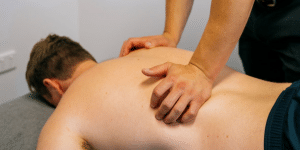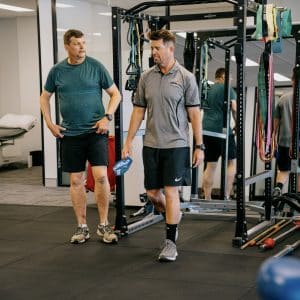The positive impact of exercise on people with cancer

Cancer is developed when abnormal cell function occurs. Cancerous cells can develop within all parts of the body and can invade surrounding and distant sites by spreading through the blood vessels and lymphatic systems.
The potential benefits of exercise during and after treatment are significant and research has proved its effectiveness.
The estimated number of new cancer cases diagnosed in 2017 will be 134,174 (72,169 males + 62,005 females).
Cancer Council Australia
Exercising during treatment can help ease side effects, such as fatigue and nausea, and can help to boost the immune system of those undergoing cancer treatments.
There are many benefits of exercise during treatment but not limited to:
- Muscle mass, strength and power
- Cardiorespiratory fitness
- Physical function
- Reduced anxiety and depression
Participation in exercise is associated with benefits during and following treatment for cancer, including improvements in psychosocial and physical outcomes, as well as better compliance with treatment regimens, reduced impact disease symptoms and treatment-related side effects, and survival benefits for particular cancers.
The type of exercise completed are also important, aerobic exercise increases aerobic capacity and can assist with decreasing the side-effects associated with anti-cancer therapy medications. Resistance training such as using dumbbells, weight machines and body weight functional exercises and stretching activities all assist with increasing strength and mobility that may have decreased through treatment modalities.
Resistance exercise recommendations:
| Parameter | Recommendation and Comment |
| Type | – Resistance exercises should be dynamic in nature using concentric (lifting and pushing/pulling phase) and eccentric (controlled lowering/returning phase) muscle contractions. – Resistance exercises using machine-weights, free weights, body weight and/or TheraBands that involve major functional lower and/or upper-body muscle groups are appropriate, as are the inclusion of exercises that replicate those daily tasks causing problems for patients – During periods of increased risk of infection, avoidance of the use of public facilities such as machine weights in gymnasiums is recommended – Resistance exercises using free weights without a training partner should be avoided when ataxia, dizziness or peripheral sensory neuropathy exists |
| Frequency | 1 -3 times/week, with rest days between sessions |
| Intensity | 50-80% 1-repetition maximum or 6-12 repetition maximum |
| Duration | 6-10 exercises, 1-4 sets per muscle group |
| Progression | Progression as per described for aerobic exercise |
Aerobic exercise recommendations:
| Parameters | Recommendation and Comment |
| Type | Walking and cycling |
| Frequency | Aim to accumulate 150-200 minutes per week. It’s expected people will vary how much exercise they complete each day based on treatment side effects and other commitments – the important thing is to make time to do something at least 5 days a week |
| Intensity | Work at a moderate intensity, aiming for 60-80% of your predicted maximum heart rate (to predict your maximum heart rate, subtract your age from 220). To put it another way – you should be able to talk, but not sing! |
| Duration | Aim for 20-30 minutes at a time. For people just starting out or suffering treatment side effects, shorter intervals of even 5-10 mins with rest breaks is okay and will allow you to experience the benefits of exercise |
For more information, contact us here or book an online appointment






